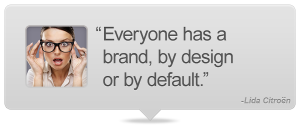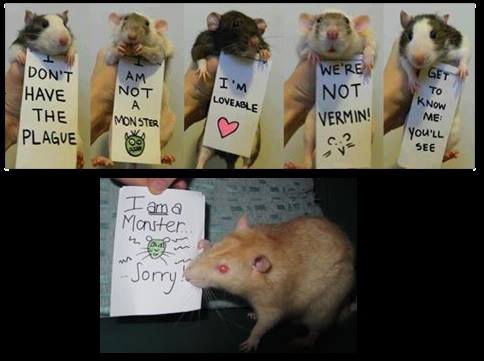Judging from the conversations I’ve had with my classmates these last few days, not to mention the conversations I’ve had in the past with recent graduates, its fair to say that few are aware of their ‘personal brand’. Admittedly, not many of us have consciously worked on building these brands, but they exist nonetheless. As much as the internet has aided our ability to communicate and share knowledge, so too has it become a digital store of every single thing we say, upload or share – no matter how old or seemingly innocuous it might be – and each one of these help form the way our ‘brand’ is perceived.
Facebook in particular, is a trove of embarrassing drunken club-night photos from our teenage (or, in some cases, more recent) years; photos which, if discovered by a employer or client, can damage our ‘image’ and reputation. The question therefore is no longer IF you have a personal brand, but whether you choose to manage and build that brand or let it be defined for you – both positively and negatively. 
Being able to trust those that you work and associate yourself with is such a hugely important part of modern business, that to not attempt to at least manage your personal brand, can have far-reaching impacts on an individual’s professional and personal life. Its more than likely that whatever business or organisation you end up working or interning for after graduation is going to be using social media to recruit and source new employees as well as to increase connectivity and productivity. Googling variations on your name as well as working out precisely what your social media profiles say (and don’t say) about you is the first step in gauging what ‘image’ your digital footprint is promoting to your boss.

After all, people want to do business with other people, not with corporations or ‘brands’, but, saying that, they also want to do business with people they can trust to do what’s in their best interests. As such, personal branding allows you to establish a reputation and an identity for yourself whilst maintaining the personalised level of trust and interaction with clients, employers and audiences, that social media allows.
Just as so with a traditional brand, personal branding requires you to find a ‘signature image’, a unique ‘voice’, and at its height, a particular written standard that readers, fans, and employers can grow to recognise. Once you understand how you want to be perceived, you can start to be much more strategic in building and shaping your personal brand. Below you can find the four key steps to get started in building a personal brand for the creative sector:
1) Cut, edit and paste your social media profiles to perfection

Facebook, Twitter, LinkedIn, Tumblr, even Instagram and Pinterest; Look at what each of your profiles say about you. If your Facebook and Instagram is filled with drunken photos, either delete them, quit having photos taken of you when you’re worse for wear, or make sure that the aspects of your profile that could be negatively misconstrued are made completely private (though you will need to regularly check this as Facebook is notorious for its changing privacy settings).
In the creative sector, Twitter and LinkedIn are professional lifelines, and its important that you come across well on them. You’ll need to professionalise (particularly on LinkedIn) but try to keep some personality to your tweets/posts; after all, nobody wants to work with a robot.
2) Start creating your own content

Employers want to see what you can do, particularly in public relations, advertising, marketing and journalism, so blogging is a simple and easy way of building your ‘brand’ whilst honing your professional ‘voice’. The key to this is writing a) about what you know, and b) about what you’re passionate about. For me, that’s communications; which, given my broad spectrum background in Journalism, B2B and B2C PR and my current studies in PR and advertising, has led to my blog covering a range of these sectors to try and demonstrate not only my industry and subject knowledge, but also my writing style and personality.
3) Find a niche and separate yourself from the crowd

A strong personal brand is dependent on a strong narrative. If you have multiple areas of interest across your blog(s) and social media profiles, this can dilute your brand. Therefore, the strength of your story becomes even more crucial in creating a unified and consistent theme. Whether this is focusing your work towards a niche audience, such as in the case of Behind the Spin (which focuses on appealing to PR students), or diversifying the focus of your content in terms of discipline, such as, Internal Communications, or sector, such as: Food and Drink.
Finding a niche is something that can be done simultaneously to creating your own content, or something that can come as a naturally forming secondary aspect once you have established an audience who respond and engage with your brand. Personally, due to the breadth of my experiences and academic studies, I have chosen the latter approach as I feel that firstly, building the foundations of my brand as a communications professional is at the moment more important, and secondly, that by measuring the success of each post I upload, I will better be able to gauge the ‘niche’ my audience and writing style best fit.
Its all about what works best for you.
4) Network like you’ve never networked before
 Expanding your professional network and engaging with social influencers is now more critical than ever. Whether its professionals already working in your desired industry/sector, social influencers with lots of connections, or simply people in great positions to help share your work, sparking conversations and making contacts is key in helping you grow and promote your brand.
Expanding your professional network and engaging with social influencers is now more critical than ever. Whether its professionals already working in your desired industry/sector, social influencers with lots of connections, or simply people in great positions to help share your work, sparking conversations and making contacts is key in helping you grow and promote your brand.
Meeting people at events is great but no matter how you engage, be sure to follow it up either through email or LinkedIn to not only expand your network, but also to reinforce your contacts memory of you in a way that leaves a lasting positive impression.
Never forget to share your story, but be sure that each part of your story is one that is worthy of sharing.


 and I feel its probably time to put my thoughts to paper (or the online equivalent of paper anyway).
and I feel its probably time to put my thoughts to paper (or the online equivalent of paper anyway).
















